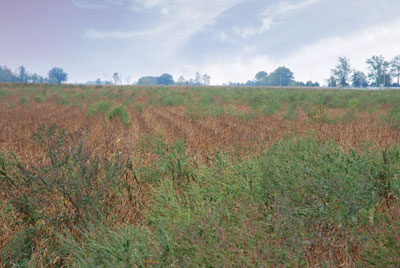
News
Is demand for corn threatening soybeans?
At the end of October 2011, the world’s seven billionth child was born, quite possibly in China, where a growing and increasingly affluent population hungers for a more western lifestyle, which includes more meat.
November 30, 2011 By Rosalie I. Tennison
At the end of October 2011, the world’s seven billionth child was born, quite possibly in China, where a growing and increasingly affluent population hungers for a more western lifestyle, which includes more meat. Not only is China’s population one of the largest in the world, but its manufacturing sector is making it one of the more influential in terms of purchasing power. So, what China wants, China can likely afford and what China wants is corn to feed its burgeoning livestock industry. But, how will this affect world and domestic soybean production that less than two decades ago exploded to meet the needs of China. “This is a big topic and is about the entire world production of soybeans and corn,” admits Victor Aideyan of HISGRAIIN Commodities in London, Ontario. “The USDA and independent projections indicate increased sales of corn to China within the next year. In fact, China is on track to import two million tonnes of corn in 2011, which is a big increase of about 100 percent. Truthfully, I don’t think anyone knows what the final number could be.”
 |
|
| Informed opinion suggests growers will stick to their rotations or specific market opportunities, including IP soybeans. Photo by Ralph Pearce.
|
Aideyan says the bottom line is that China is expanding pork production as a result of the growing affluence of the population. He says if it turns out China imports more than twice what the US prediction is then the entire corn balance sheet will be thrown off and will have to be rewritten.
Obviously, this demand will have a positive effect on corn production in the US Midwest, especially if corn prices remain in the $6 per bushel range. However, what does this mean for soybean production?
Initially, it would seem that if corn prices stay high or go higher, growers will attempt to cash in and plant more corn. However, it has taken many years to build the soybean market and whether the beans are being grown for animal or human consumption, contracts must be honoured. “In Ontario, we produce IP (identity preserved) soybeans,” Aideyan explains. “So, the fall of 2011 may see reduced wheat acres and corn acres may be increased, but we should still meet our soybean quotas.”
Martin Vanderloo of Huron Commodities in Clinton, Ontario, says Canadian farmers are committed to sustainable production and he does not see them jumping on the bandwagon to meet China’s needs in the short term. “Good growers will not switch gears due to the economics on corn versus soybeans,” he says. “Responsible growers will want to maintain their planned rotations in order to remain viable.”
He adds that growers who are currently in the IP soybean business will remain without increasing corn acres. “Certainly, some growers have switched to crusher soybeans and have moved away from IP beans, but, due to the increasing demand for traceability, I don’t think we will see too many growers switch,” Vanderloo comments. “Prices on corn and soybeans will continue to fluctuate, so growers will want to have options.”
The energy issue is adding another wrinkle to what may transpire because the corn-for-energy market is still heavily subsidized in the US, making it a viable option. However, if those subsidies are ever removed, growing corn for China may be lucrative. Vanderloo believes eventually, there will be a move away from corn-for-ethanol towards more cellulose-based sources and then the markets will
shift again.
A good future for crop farmers
No matter what happens in China, Aideyan believes times are good for anyone in cash crops. “If we have a normal spring in 2012, US growers will plant a corn crop that will shock everyone,” he says.
This means Canadian growers who know weeks in advance of planting their own crops what is transpiring in the US ican adjust their planting intentions. If, as he suggests, US growers will plant higher corn acres, there could be opportunity for Canadian soybean growers to meet the needs of reduced soybean supplies from the US.
As of November 2011, more money was being offered for 2012’s crop than expected, so growers have time to decide how to divide their acres for various crops. However, the great unknown in this focus on what China wants is the world financial crisis and Aideyan suggests that, if China gets sucked into the crisis, the analysts will be scrambling to understand how corn and soybeans will be affected. “Don’t forget there are social issues at play as well in China,” says Vanderloo. “The Chinese people want cars and that could have an effect on energy consumption, which will affect corn and soybeans indirectly. It’s all about supply and demand.”
Without a doubt, the challenge for growers is to remain calm and not get caught up in what could become an hysterical reaction to China’s continuing demand for western goods, from crops to cars. Despite the uncertainty with the financial markets and the attempts to predict what China may want, there will be some very positive opportunities for Canadian soybean producers – under favourable
growing conditions.